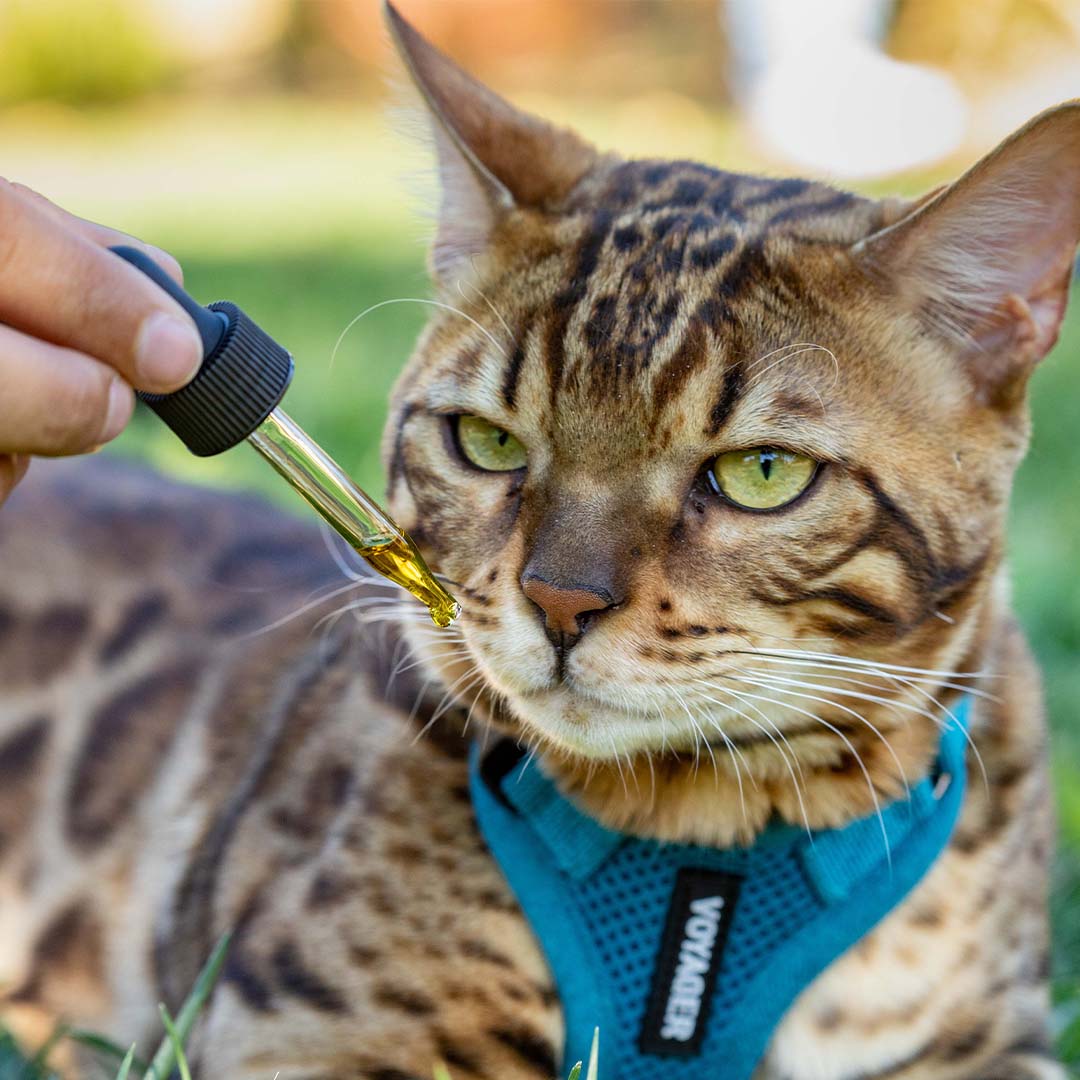There's nothing quite like walking with your dog around the block or going on a hike and taking a moment to marvel at nature's colors. These are amazing moments between you and your dog, but have you ever wondered what it looks like through your pet's eyes? Many people have wondered, "Are dogs color blind?"
There is a misconception that dogs are color blind, but they can actually see some color. It turns out there are some similarities between the way human and dog eyes work. They both provide one essential service. Our eyes are the lenses that help us experience the world around us. Let's find out how our canine companions' eyes work!
What is Color Blindness?
Color blindness differs from person to person and dog to dog. Most humans see all colors, while some people and dogs don't see variations of certain colors. There are also people that cannot see any color at all. The main colors those with color blindness cannot see are either a combination of red and green or yellow and blue.
People and dogs with partial color blindness are not able to see variations between these colors. It is usually passed down genetically and does not have a cure. For people, color blindness may make it difficult to learn while in school or complete everyday tasks at home and work.
Our eyes contain tiny cells called cones that receive light and process it into color. People with partial color blindness are missing certain cones due to a defect. No need to worry; thanks to modern science, special glasses and contact lenses exist to help people with red and green or blue and yellow color blindness see the world in a broader color spectrum.
What do colorblind people see? It can be difficult to describe since everyone perceives color in their own way. This is why something that looks purple for one person might be identified as violet for others, and vice versa.
Overall there are millions of colors visible to the human eye. That is a pretty stretched-out rainbow. Partially color blind dogs and humans are only able to distinguish around ten thousand colors. As far as dogs go, they make up their color vision deficiency in other ways that benefit them.
Are Dogs Color Blind?
Yes, dogs are technically color blind, but there's no need to worry about your pooch. Canines have red and green color blindness due to their genetic makeup. In other words, it is normal for a dog to see shades of black and white instead of red and green.
Remember those cones we mentioned? Humans normally have three different types of color receptors. For your four-legged friend and the entire canine population, their eyes only have two types of cones for color perception.
Your dog might not be able to see a red apple sitting on green grass. It would likely look like one shade of gray layered with a different shade of gray. There are some colors they can see, however.
A few decades ago, researchers thought dogs were monochromatic (only capable of seeing one color hue) or completely color blind. Movie films, cartoons, and other media mistakenly display a dog's perspective in black and white. It was only recently that they were able to dive deeper into a dog's perception of color.
How Do a Dog's Eyes Work?
So what makes it possible for dogs to see some colors and not others? It turns out that the way a dog's eyes work is similar to ours but with a few key differences. We will help break it down for you without the need to stare directly into your dogs to see how they work.
A dog's eyes are complex and made up of different parts, so we will only focus on the parts responsible for color perception.
Retina
Think of a dog's eye as a ball. When you stare at a dog's eyes, the first thing you notice is its pupils or the front side of the ball. The backside of the eyeball is where the retina is located.
The retina is a thin layer surrounding the back of the eyeball and plays an important function in dog vision. It is home to light-sensitive cells called rods and cones that are responsible for processing light. The information is then sent to the brain from the retina. It is transferred through the optic nerve attached to the back of the eye to create an image in your dog's head.
Rods
No, we're not talking about ones used for fishing. The rods in a dog's eyes are light receptors that help the dog see in dim light settings and make their eyes more sensitive to movement. This explains why your dog can see a rat running across the fence in the middle of the night.
Cones
Sadly, we're not talking about ice cream cones. Cones are the other type of receptors hanging out in the retina. Since rods specialize in dim light, cones process bright light into a dog's color vision and add fine detail to the image it creates.
Like us, canines depend on this function within their eyes to help them perceive the world around them. Humans also have retinas with rods and cones to help process the light.
We see more colors because we have three types of receptors for color perception. This makes us trichromatic, which is considered "normal" color vision. People with partial color blindness and dogs only have two types of cones to view certain colors; this makes them dichromatic.
What Colors Can Dogs See?
If dogs are color blind to shades of red/green color, then what colors do they see? Dogs can distinguish variations of yellow and blue colors. A dog's color spectrum does not resemble a rainbow pattern but instead shows a combination of gray, yellow, and blue shades.
A dog will go its whole life without seeing red, green, and even orange. Traditional Christmas decorations will appear mostly black and white. But that doesn't stop your dog from enjoying spending time with you during the holidays! Your furry friend may still notice the yellow and blue parts of the Christmas lights.
Technically, someone born with green and red color blindness perceives the same color patterns as dogs. But do not think of color blindness as a disadvantage. Dogs make up for their lack of green and red color vision by having a heightened sense of smell and hearing. These characteristics work together when a dog is detecting the world around them.
Humans with color blindness can view missing colors with special lenses. Don't worry about calling your vet to find out about special glasses for your dog. Its biology was programmed to view certain colors without any issues to its health.
What Color is a Dog Most Attracted To?
No other color will catch a dog's attention better than hues of blue-violet and shades of yellow. Have you seen how excited a dog gets when it plays with a yellow or blue toy?
Since dogs see in yellow and also blue shades, you should seek out toys or accessories with these color patterns. Did you just recently adopt a dog as a family pet? Make it feel more comfortable by getting it a blue sleeping bed!
The research conducted by scientists was extensive, but helped determine whether dogs see certain colors. Thanks to the researchers' hard work, we are confident that our dogs enjoy yellows and blues.
Can Dogs See in the Dark?
"Are dogs color blind" is a common thing people wonder about their canine companions. But most people agree that dogs can see in the dark without any issues. In fact, dogs see better in the darkness than humans do!
Dog eyes contain more rods than human eyes do. This is what helps them see at night better. They have more receptors available to absorb lights from low settings.
Humans had to invent night vision goggles to help compensate for poor sight at night. Dogs have an extra reflector in their eyes called a tapetum lucidum to better help them process dim light conditions.
It is basically a cheat code to help dogs hunt and survive during the night. You can notice the tapetum lucidum in action whenever your dog's eyes glow at night.
Are There Things You Can Do To Help a Color Blind Dog?
Save yourself the stress about what you can do to help a color-blind dog see greens and reds. Since their genetic make-up was designed like that, it is best to focus on other issues your pet may face.
Dogs are amazing companions, but they aren't indestructible. They are prone to all types of discomforts. When dealing with a canine struggling with different irritations (especially those in the eyes), you can help alleviate their aches with CBD products.
Premium CBD oil for dogs is something people consider for their pets because it doesn't get them "high" and promotes overall wellness in your dog. Do you have a dog dealing with nervous behavior or struggling to keep up with playtime? Check out these amazing CBD products from HolistaPet.
- CBD calming chews for dogs: These all-natural CBD soft chews help alleviate a dog struggling with nervousness.
- CBD mobility chews for dogs: This organic treat promotes joint support and movement and is soft to chew. Our CBD mobility chews are perfect for older dogs!
- CBD treats: Holistapet offers three types of treats to support different systems in a dog's body. These are treats for heart and immune care, joint and mobility, and bad behavior habits.
- CBD shampoo: Help keep your dog stay fresh and clean while maintaining a healthy coat with CBD shampoo.
- CBD oil: CBD oil for dogs, more direct approach to CBD ingestion to promote wellness for your dog. Simply add a few drops to their food, water, or favorite chew toy.
They all sound amazing, right? Head on over to Holistapet to find a CBD product that is best for your canine friend!
Final Thoughts - Are Dogs Color Blind?
We often take our canine pals on walks to keep up with their exercise requirements, but have you given a thought to how dogs perceive the world? It turns out dogs are just partially color blind. They can see a range of yellow, blue, black, and white hues.
On your next walk or hike with your dog, take the time to find a garden with flowers containing shades of yellows and blues. Your pooch will thank you for the view!








![Probiotics For Dogs [Soft Chews]](http://www.holistapet.com/cdn/shop/files/Probiotic-Infographic-1_472d7a29-e30c-435a-9638-1365d8c3a9f9.jpg?v=1725384841&width=104)















![Are Dogs Color Blind? [Sort of, Find Out the Truth Here!]](http://www.holistapet.com/cdn/shop/articles/312.jpg?v=1716830134&width=1500)














Leave a comment
This site is protected by hCaptcha and the hCaptcha Privacy Policy and Terms of Service apply.